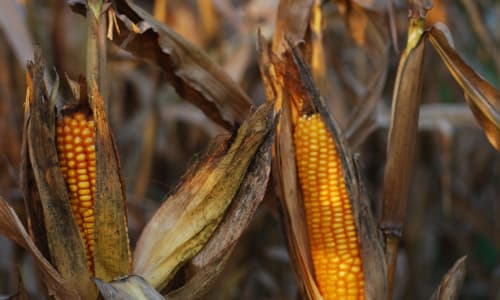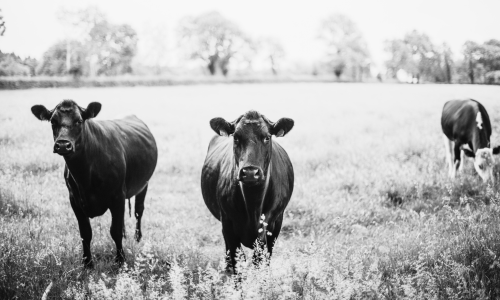Risk Management with Ag Partners Cooperative
At Ag Partners, we recommend that Multi-Peril Crop Insurance (MPCI) always be an integral part of any farm's risk management strategy. There is no other way to protect the number of bushels or revenue per acre that the MPCI program can at the premiums per acre that it costs. That is due to a shared governmental investment in those premiums to help mitigate disasters in a much better way than the ad hoc programs can.
Crop Insurance Products
Ag Partners offers a complete selection of crop insurance products to help cover the unknown risks that can be problematic for a profitable year. Risks like weather or falling markets can be greatly reduced or eliminated by putting a guarantee on the minimum amount of revenue per acre you will receive. The list of Federal MPCI programs that we offer includes:
- Revenue Protection
- Yield Protection
- Pasture Rangeland Forage (PRF)
- Livestock Risk Management (LRP)
- Supplemental Coverage Option (SCO)
- Enhanced Coverage Option (ECO)
- Margin Protection
- Whole Farm Revenue Protection
Private Products
We also offer an extensive line of private products as well, including:
- Crop Hail insurance
- Basic Hail
- Production Plan Hail
- Green Snap and Wind
- Field Fire
- Pasture Fire
- Vandalism
- Companion
- Variable Interval Product (VIP)
- Adds intervals of price discovery
- Potentially increases your total revenue coverage on RP/ARP plan
Crop Insurance Partners
Ag Partners proudly works with strong industry partners to provide some of the best services available.
Input Financing
Program Benefits
- Streamline financing with a single, convenient source
- Enjoy decision-making freedom and seize purchasing opportunities year-round
- Lock in input costs to boost income potential and minimize risk
- Improve security of product supply
- Pay early without penalty
- Benefit from a confidential payment option for inputs and services
- Enhance your operation with a comprehensive agronomic partnership
Read Full 2026 Program Details Here
Complete the forms below and submit to Jim Ward, or reach out to him directly for a link to enroll online!
Contact Us About Ag Partners ONE PAY Today!

Crop Insurance News
Consistency is Key
October 2025

Darcy Pralle, Crop Insurance Specialist
The 2025 crop year is coming to a close as combines roll through corn and soybeans. Initial corn yields don’t look as high as 2024, but most yields will still be good if you had a comprehensive fungicide program. If not, you might be a bit disappointed, as our area was hit with heavy disease pressure this Summer. Soybeans are just getting started but appear to be average to above average in a lot of areas as well. Total rainfall wasn’t off the charts, but the overall consistency of rainfall this growing season was impressive. Yes, there were some small dry spells, but our random rain patterns seemed to deliver on a timely basis. Shoot, with these latest rains, we all might be mowing our yards till Thanksgiving because the grass won’t stop growing!
Of course, the major complaint this year was about the grain markets. There is no magic fix to markets, but if you purchased a Revenue Protection policy from your Crop Insurance Agent, you might trigger an indemnity this year with just the drop in grain prices. So, it’s a good idea to keep accurate tickets and bin records in case you need to file a claim. Also, report your bushels to your Agent as soon as you wrap up harvest because there are deadlines in December to turn in claims.
Likewise, don’t forget to turn in any Wheat acres you drill this Fall to the FSA Office and notify your Agent. The other deadline later this year is the Rainfall Insurance (aka “PRF” Insurance) for 2026. Even with this year’s rainy Spring and Summer months, most 2025 PRF policies had already triggered over the Winter and put producers ahead of the 8-ball in 2025. So overall, PRF Insurance looks like a good deal again as we head into 2026.
To end on a high note, the cattle markets were sky-high again this year. These are the type of cattle markets you tell your grandkids about and are right up there with the $8 corn stories. We would love to see the cattle stay high forever, but we all know it’s going to crash one of these days. If you are concerned about setting a floor while prices are high, we have Livestock Risk Protection to help you out. This subsidized Insurance policy is like a Put Option with some nicer benefits. When cattle prices finally plummet, we don’t want any of our producers left holding the bag. All it takes is a call to the Ag Partners Insurance team, and Darcy Pralle or Jim Ward would be happy to answer any questions.
We wish you a safe and bountiful Harvest season!
Sizzle of Summer
July 2025

Darcy Pralle, Crop Insurance Specialist
The Summer weather has cranked up the thermostat to hot with a chance of severe storms. If you are hit by any hail or wind damage, please take a look at your farms and let your agent know which ones need to be turned in for insurance adjusters. Even if you don’t have a Hail & Wind policy, it’s worth giving your Crop Insurance agent a call if you see considerable damage. If you would like to sign up for Hail & Wind coverage, it’s not too late! A quick phone call to Ag Partners and Jim Ward or Darcy Pralle can get you covered before the next big storm hits.
The cattle markets are also riding the summer wave as grilling season gets into full swing. Like last Summer, our beef prices have stayed high and even risen a bit. The problem is that no one knows what the next 6 months will look like. If you are even slightly concerned the cattle you are feeding now could drop in price, we highly recommend locking in your profits today. Livestock Risk Protection (LRP) Insurance can set a floor on today’s high cattle prices, so if prices have dropped when you sell down the road, you will be protected. We already have numerous cattle operations using LRP, so don’t hesitate to reach out if you want to learn more.
We saved the best for last. The producers who signed up for the 2024 Enhanced Coverage Option (ECO) might see some claim checks headed their way. The Government has released the final 2024 County yields for Corn and Soybeans across our area. In most Counties the Corn yield was average, and Soybean yields were slightly below average. This means that 2024 ECO can now be calculated with these County yields and the price drop we experienced last year in the grain market. The initial numbers show 2024 ECO paying on most Soybean policies and even some of the Corn policies as well. If your current agent didn’t discuss ECO Insurance for 2025 you owe it to your operation to call Jim Ward or Darcy Pralle and learn how your neighbors are making so much money!
Wish you a fun and safe Summer





